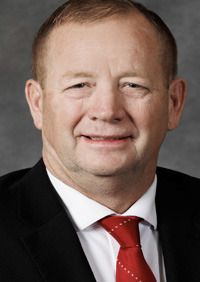Last week, the Agriculture Committee held a public hearing for LR280 introduced by the Agriculture Committee. The hearing was held at the University of Nebraska at Kearney.
LR280 was introduced to examine a number of questions surrounding the Brand Law, including issues surrounding the continued value and utility of mandatory brand inspection.
In recent years, the Legislature has considered legislation that would fundamentally change how brand inspection is implemented, including legislation that would either end mandatory brand inspection or fundamentally change the scope of brand inspection. LR280 also directed the Committee to look at the current state of the Brand Committee, including its financial stability, its success in achieving its mission, and potential revisions to the Brand Law to make brand inspection less costly and cumbersome. The hearing in Kearney focused on the current state of the Brand Committee. Earlier this interim, I submitted an inquiry to the Brand Committee who provided a detailed written response to the questions asked prior to the hearing. At the hearing the Brand Committee further elaborated on its answers and responded to additional questions from the Agriculture Committee. I was particularly interested in the information the Brand Committee provided about its cash flow projections. A number of factors have led to the Brand Committee having to spend down its cash reserves. Earlier this year, the Brand Committee did increase inspection fees and brand renewal charges which, according to the information the Brand Committee provided, should help restore financial stability. There was also considerable discussion about the costs and other difficulties of implementing e-inspection.
Additional witnesses provided information about the value of brand inspection, including State Veterinarian Dr. Roger Dudley, who described how the Brand Committee’s inspection program and its law enforcement personnel aid the enforcement of animal health regulations. A key document that is heavily relied on to help establish ownership is the veterinary certificate. Brand inspection, therefore, serves as an additional incentive for producers to be in compliance with health regulations that apply when cattle arrive from other states or other situations when a health certificate is required. A witness from the banking community explained how brand inspection is a factor in making more confident lending decisions. Witnesses for the Independent Cattlemen of Nebraska (ICON) and the Nebraska Cattlemen also weighed in.
While there is continued sentiment favoring continuing Nebraska’s mandatory brand inspection program, not all cattlemen feel that way. The Agriculture Committee also heard from a representative of a feedlot group who argued that brand inspection has outlived its usefulness, that it creates unfair advantages for feeders located outside the brand area. They hold that brand regulations have been an impediment to growth of the feedlot sector. Their suggestion is that Nebraska should take a closer look at how brand inspection is implemented in other states, and in particular point to Kansas’ voluntary brand inspection as a possible alternative model to embody.
The Agriculture Committee will hold its final public hearing for the year on October 31 at the State Capitol. This hearing will examine issues relating to noxious weeds, threats to Nebraska agriculture, livestock electronic identification devices, and youth agriculture programs.
I invite you to let me know your concerns. My number is (402) 471-2801 while my email is [email protected].

.jpg)








